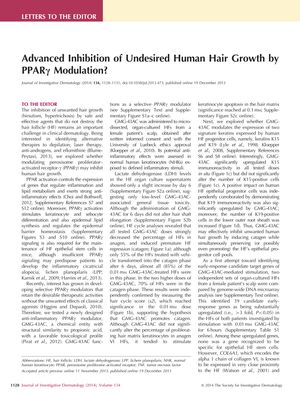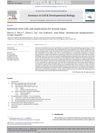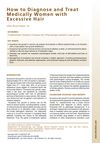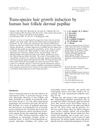Advanced Inhibition of Undesired Human Hair Growth by PPARγ Modulation
November 2013
in “
The journal of investigative dermatology/Journal of investigative dermatology
”
PPARγ modulation GMG-43AC hair follicle regression catagen phase keratins K15 keratins K19 HF epithelial progenitor cells anti-inflammatory properties IL-6 expression normal human keratinocytes hirsutism cicatricial alopecia lichen planopilaris PPAR gamma modulation hair follicle progenitor cells normal human skin cells excessive hair growth scarring alopecia

TLDR GMG-43AC may help reduce unwanted hair growth and treat certain hair loss conditions.
The study explored the potential of GMG-43AC, a selective PPARγ modulator, to inhibit unwanted human hair growth by inducing premature hair follicle (HF) regression (catagen) while preserving HF epithelial progenitor cells. GMG-43AC was tested on organ-cultured HFs from a female patient, showing a significant increase in catagen phase HFs and upregulation of keratins K15 and K19, indicating a positive impact on HF progenitor cells. Additionally, GMG-43AC demonstrated anti-inflammatory properties by preventing IL-6 expression in normal human keratinocytes exposed to inflammatory stimuli. The findings suggested that GMG-43AC could be a promising candidate for managing hirsutism and potentially treating cicatricial alopecia like lichen planopilaris due to its anti-inflammatory and stem cell-protective effects.




